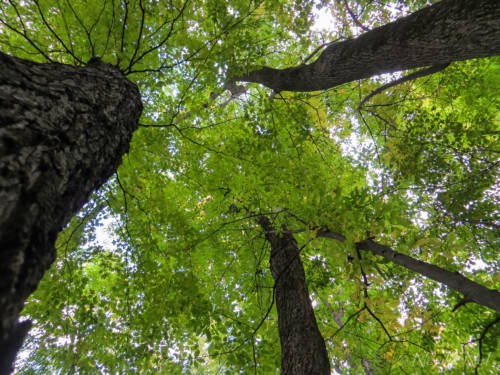Watch This Now: How Trees Talk To Each Other
Whether we want it to or not, the end of summer is approaching– which is all the more reason to spend even more time outdoors. With these last few weeks of the season, there’s a lot to cram in (back to school errands, trips, moving, and the usual rumble of day-to-day life) and spending time outdoors– just relaxing– can often fall to the end of the list. Fortunately, we’ve found the perfect way to expand your child’s outdoor environmental education without going out of your way.
Enter Suzanne Simard, a forest ecologist, whose TED Talk below sets out to “change the way you see forests.” Simard grew up spending time outdoors in the forests of British Columbia and her research is in the field rather than the lab (her results came at the expense of being chased repeatedly by bears). Her love of forests was fostered by a grandfather who selectively cut cedar from the forest, teaching Simard along the way about how her family fit in to the forest’s ecosystem.
The results of her work were revolutionary: Simard discovered that trees communicate with one another. Her initial discovery was that trees pass carbon to one another through their roots, and that the ebb and flow changes with seasons (for example, at certain times of year, birch will pass more carbon to a fir). As she continued her investigation, she discovered that not just carbon was transmitted, but nitrogen, phosphorus, water, and defense signals, as well. An injured or dying mother tree will send signals down to her seedlings to increase their resistance to environmental threats, which in turn increases the resistance of the entire network of trees.
A single mother tree can be connected to hundreds of other trees– which is what makes indiscriminate forest cutting so destructive. When these “hub trees” are removed, it can wreak havoc on the surrounding ones and entire systems collapse. In her talk, Simard presents her solutions to this practice, advocating that there cannot be a one-size-fits-all approach to caring for forests– each has a unique identity. Simard encourages us to save the legacies these centuries old spaces have offer, and most of all, to “reestablish local involvement in our own forests”.
The enthusiasm with which Simard speaks about her childhood experiences, and how they fostered a life-long love of forests, is truly inspiring. It reminds one that simplest discoveries as a child can often have a profound effect. As you’re moving through green spaces in August– whether it’s a forest or just a park– take a minute to appreciate the trees, to imagine the roots that connect them, and to consider how they are supporting each other and the world we enjoy.
Check out the talk below.



































